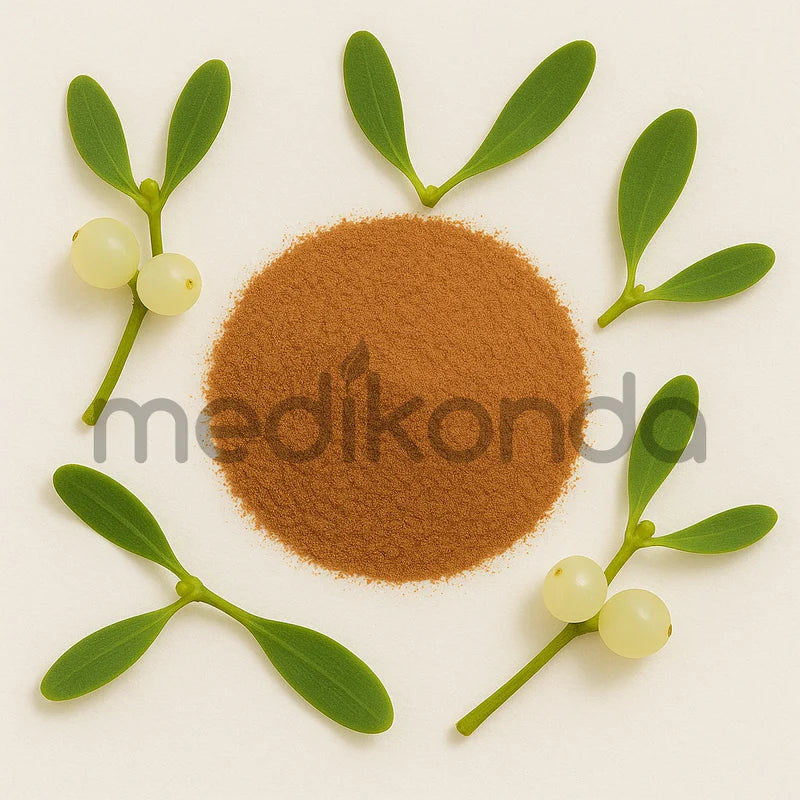Medikonda Nutrients
Mistletoe Powder
Mistletoe Powder
SKU:RA566
QC Documents - Download
QC Documents - Download
Product Description
Product Description
Wholesale Bulk Mistletoe Powder Suppliers in USA
|
Common Name: |
Mistletoe Powder |
|
Botanical Name: |
Viscum album |
|
Family: |
Santalaceae |
|
Plant Parts Used: |
Leaves |
|
Form: |
Powder |
|
Color Appearance: |
Greenish color Powder * (due to the nature of natural ingredients, color may slightly vary) |
|
Mesh Size: |
60 ~ 80 mesh |
|
Certifications: |
USDA, EU, Kosher |
|
Country of Origin: |
India |
|
Product Applications: |
Nutraceuticals, Cosmetics, Herbal Teas, Capsules, Tablets, Functional foods beverages |
|
Product Offerings: |
Mistletoe Powder |
Medikonda Nutrients is the Largest Manufacturer, Wholesale Supplier, Bulk Distributor, Exporter of USDA Organic Mistletoe Powder in USA.
Mistletoe Powder: Overview
Mistletoe Powder is a finely ground botanical substance derived from various species of mistletoe plants, including Viscum album and Phoradendron spp. It has a long history of cultural significance and medicinal use, particularly in European and North American traditions. Mistletoe powder contains biologically active compounds that have captured the attention of herbalists and researchers alike.
In traditional medicine, mistletoe powder has been employed for its potential immune-boosting properties and its role in supporting cardiovascular health. It is perhaps most famous for its association with holiday traditions, where it is hung as a festive decoration, often beneath doorways or overhangs. In some cultures, mistletoe is considered a symbol of love and goodwill, with the tradition of kissing beneath it.
In recent years, mistletoe extracts, including mistletoe powder, have been studied for their potential anticancer effects. Some research suggests that mistletoe may have a role in complementary cancer therapies, although more investigation is needed.
Mistletoe powder's rich history and diverse applications make it a unique and intriguing botanical substance, valued both for its cultural significance and its potential health benefits.


